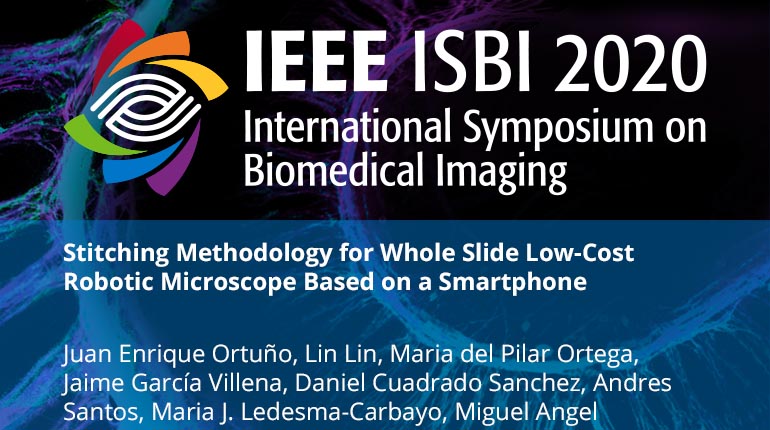
Already purchased this program?
Login to View
This video program is a part of the Premium package:
Stitching Methodology for Whole Slide Low-Cost Robotic Microscope Based on a Smartphone
- IEEE MemberUS $11.00
- Society MemberUS $0.00
- IEEE Student MemberUS $11.00
- Non-IEEE MemberUS $15.00
Stitching Methodology for Whole Slide Low-Cost Robotic Microscope Based on a Smartphone
This work is framed within the general objective of helping to reduce the cost of telepathology in developing countries and rural areas with no access to automated whole slide imaging (WSI) scanners. We present an automated software pipeline to the problem of mosaicing images acquired with a smartphone, attached to a portable, low-cost, robotic microscopic scanner fabricated using 3D printing technology. To achieve this goal, we propose a robust and automatic workflow, which solves all necessary steps to obtain a stitched image, covering the area of interest, from a set of initial 2D grid of overlapping images, including vignetting correction, lens distortion correction, registration and blending. Optimized solutions, like Voronoi cells and Laplacian blending strategies, are adapted to the low-cost optics and scanner device, and solve imperfections caused using smartphone camera optics. The presented solution can obtain histopathological virtual slides with diagnostic value using a low-cost portable device.
This work is framed within the general objective of helping to reduce the cost of telepathology in developing countries and rural areas with no access to automated whole slide imaging (WSI) scanners. We present an automated software pipeline to the problem of mosaicing images acquired with a smartphone, attached to a portable, low-cost, robotic microscopic scanner fabricated using 3D printing technology. To achieve this goal, we propose a robust and automatic workflow, which solves all necessary steps to obtain a stitched image, covering the area of interest, from a set of initial 2D grid of overlapping images, including vignetting correction, lens distortion correction, registration and blending. Optimized solutions, like Voronoi cells and Laplacian blending strategies, are adapted to the low-cost optics and scanner device, and solve imperfections caused using smartphone camera optics. The presented solution can obtain histopathological virtual slides with diagnostic value using a low-cost portable device.
 Cart
Cart Create Account
Create Account Sign In
Sign In





